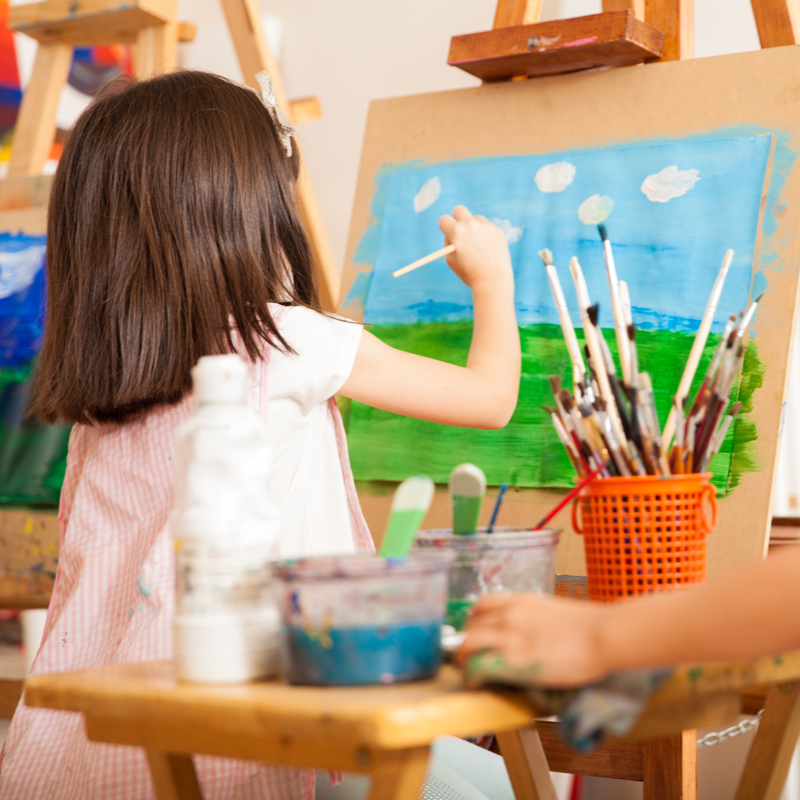
With so many types of paint available, it may seem overwhelming when choosing what to buy for children. A boxed palette of watercolors can teach a child about mixing colors as well as how to take care of their arts and crafts supplies. Tempera paints offer more intense colors that work on paper as well as other surfaces
Materials for Young Painters Ages 2 to 12
Even a toddler can use a palette of watercolors. A palette of eight-to-ten colors is actually better for children than a palette twice that size because then the child has to mix colors to get lighter and darker colors than the kit offers. Children ages nine or ten and up might want to try using tube watercolors that require they squeeze a small amount of paint onto a plate or palette. Kids can try a variety of techniques with watercolors.
Tube paints are easier to mix and are good for children who like mixing colors and creating seventeen shades of green. Children eight and up may also enjoy exploring watercolor pencils since they can create a precision drawing with a pencil but soften the look with a brush and water.
Tempera paints are used directly as opposed to being mixed with water. Washable tempera paints are okay for painting on paper but if used on other surfaces and they get wet then the project is ruined. Use acrylics with children who possess the dexterity to manipulate a paintbrush and keep a neat work area.
Paintbrushes for Artwork
Purchase some inexpensive paintbrushes that are a better quality than the short, stiff-bristle brushes that come with watercolor palettes. Soft-bristled brushes require more control but they cover a surface (whether paper or wood) more smoothly.
Look for flat-edged brushes, pointed brushes, angled tip brushes, and even fan brushes. Quite often, sets of five brushes with different tips are sold in inexpensive sets. These brushes give more flexibility in creating different results and should be purchased for kids ages seven and up.
How to Use a Paintbrush with Watercolors
Dip the tip of the brush in the water and then in the paint. Rinse the brush thoroughly when switching colors. Change the rinse water frequently (which isn’t the same thing as providing a larger container of water). Have a rag or a stack of paper towels nearby to dab excess water off the brush. If using the same color, it isn’t necessary to dip the brush in the water between strokes.
At the end of a project, dip a clean paper towel over each cake of paint to absorb the excess water and mop up any dirty water. This way the paints will be clean for their next use. Show children how to clean up their paints at the end of a project. By age seven or eight, most children should be able to connect the act of cleaning up to the benefits of finding their supplies in the condition they wish to use them.
Thank you for reading this article! If you have any further questions about this topic please contact us.
